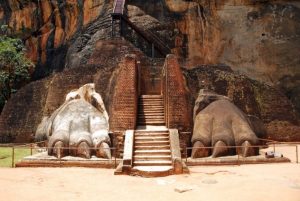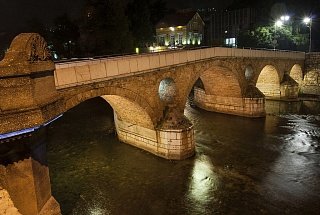10 legendary lost cities that were found
 We are still unable to find the underwater grave of Atlantis, the golden streets of Eldorado or the mountains of Shangri-La. It is possible that they probably never existed at all. But there are real places that were considered lost forever, but were found. They were not just myths – they just waited for them to be found.
We are still unable to find the underwater grave of Atlantis, the golden streets of Eldorado or the mountains of Shangri-La. It is possible that they probably never existed at all. But there are real places that were considered lost forever, but were found. They were not just myths – they just waited for them to be found.
1. Helika: almost Atlantis
Greek myths say that Helik was destroyed by Poseidon, who flooded him overnight in 373 BC, and for centuries the city was considered just a legend until it was found. In the late 1980s, two archaeologists began to search, it took them more than 10 years, but they found it underground. The catastrophe was not the revenge of Poseidon, it was an earthquake, causing the city to collapse.
2. Dvaraka: House of Krishna
Dvaraka is the ancient home of Krishna. It was built allegedly by his personal order, since Krishna desired the city of silver and precious stones from 16108 palaces. In 1982, Dvarak was found, there were no palaces there, but it was a large city with a good layout, built 9 thousand years ago. At the height of its heyday, it was one of the busiest seaports in the world, but in the 2nd century BC the city went under water.
3. The Great Zimbabwe: Medieval Castle of Africa
At the beginning of the 16th century, Portuguese researchers retold the legends of a castle in Africa. The locals called him Simbao and had no idea who built it. In the 19th century, the mysterious Simbao discovered. It was a massive castle-fortress with stone walls 11 m high, built in 900 AD. African lost civilization. Artifacts from all over the world were found inside the fortress: Arabic coins, Persian pottery and even objects from the times of the Chinese Ming dynasty.
4. Xanadu: Kublai Khan Palace
Marco Polo returned from China, impressed by Xanadu. It was a marble palace surrounded by an incredibly huge park with fountains, rivers and wild animals. Khan kept there 10 thousand white horses, which were guarded by dragons. The palace was destroyed by the Ming army in 1369 and eventually became a legend. However, it was found. And its ruins do correspond to the enthusiastic description of Marco Polo.
5. Sigiriya: the eighth wonder of the world
In Sri Lanka, in the 5th century AD, King Kassapa built his palace on the top of a 200-meter-high cliff. To reach it, you had to climb a large staircase that passed through the mouth of a huge lion statue. When European archaeologists began investigating this story, they learned that the castle was absolutely real, and there really was a massive lion guarding the stairs. UNESCO declared Sigiriya the eighth wonder of the world, but for a long time it was nothing but the forgotten ruins of a deposed tyrant.
6. Leptis Magna: Roman city buried in the sand
The huge Roman city in Libya, was once a major trading center of the empire, but when Rome fell into decay, Leptis Magna was looted and abandoned, and then buried under drifting sands, where he spent about 1,200 years until he was found in 19 century. The city is almost completely preserved: there is still an amphitheater, bathhouses, basilica and circus, looking almost the same as in its heyday.
7. Vinland: Viking Land
Vinland was considered a Viking myth for centuries, even after the Spaniards discovered both of America. In the 1960s, it turned out that the ancient Vikings still spoke the truth. On the island of Newfoundland (Canada), archaeologists discovered the remains of a 11th century Viking settlement – the very Vinland from their legends. So the Scandinavians can be considered the pioneers of America.
8. Heraklion: a drowned Egyptian city
Heraklion is mentioned in almost every Greek myth. And it turned out to be a real place. About 2200 years ago, Heraklion probably suffered from an earthquake or tsunami and drowned. Divers, sailing off the coast of Egypt, came across him in the early 2000s. They found whole statues, jewels, steles and even temple ruins. It was a whole lost city, pulled out from the depths of the water and revived again.
9. La Ciudad Perdida: The Lost Colombian City
About 1300 years ago, the ancient people of Tayrona built an incredible city along the Sierra Nevada de Santa Marta mountains on top of hills to live closer to the stars. The city lasted for 700-800 years, until the Spanish conquistadors arrived with unknown diseases that completely destroyed the local population. An ancient, jungle-overgrown city, full of gold ornaments and jade figures, was discovered in the 1970s after almost 500 years of oblivion.
10. La Ciudad Blanca: City of the Monkey God
Rumors that the richest city is hidden in the jungles of Honduras have been known since the time of Cortes. Cortes did not find him, but the legend lived. And modern archaeologists have found this city, or rather the pyramid in the tropical forest, built by a civilization that disappeared 1000 years ago. The city has preserved a mass of stone sculptures and impressive architecture, which were then considered signs of incredible wealth and power.



